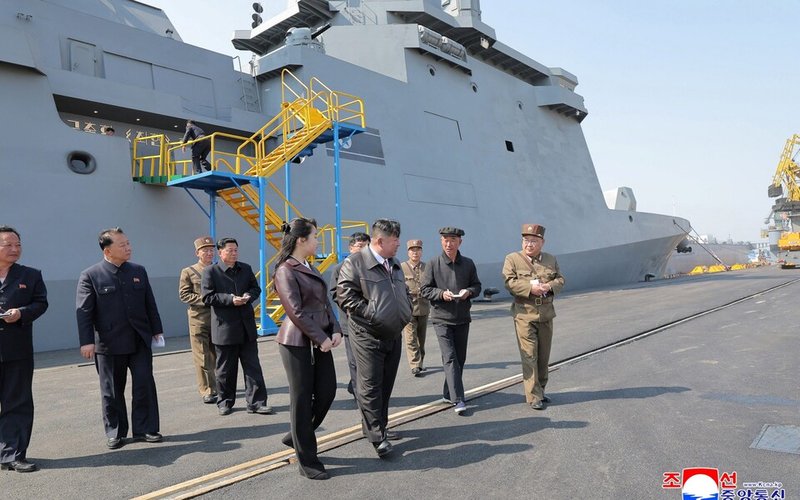
The recent capsizing of North Korea’s flagship 5,000-ton destroyer during a failed launch has become an international spectacle of embarrassment for Kim Jong-un. Yet beyond the internal chaos—arrests, humiliation, and fear of executions—lies a more dangerous geopolitical undercurrent: China’s silent enabling of North Korea’s military ambitions, and the growing threat it poses to U.S. national security.
The warship, which toppled over during its sideways launch at Chongjin shipyard in front of Kim himself, was supposed to symbolize Pyongyang’s naval modernization. Instead, it became a symbol of failure and desperation. But who helped North Korea get to this point?
While North Korea lacks advanced naval engineering capabilities, China remains its primary supplier of critical materials, dual-use technologies, and economic lifelines, allowing Kim’s regime to persist and experiment—including with military shipbuilding. Though Beijing denies direct involvement, its refusal to strictly enforce U.N. sanctions and its covert trade networks have allowed North Korea to redirect resources into weapons development.
This warship failure—just weeks after a successful launch at Nampo port—also highlights the accelerated military pressure Pyongyang is under, likely fueled by Chinese encouragement to challenge U.S. and allied influence in the Indo-Pacific.
As the U.S. strengthens trilateral ties with South Korea and Japan, and reinforces military posture in the Taiwan Strait, China is doubling down on strategic buffers like North Korea to create regional diversions and instability. By propping up rogue states, Beijing undermines American deterrence without directly confronting it—an asymmetric strategy that exploits Western hesitation and procedural caution.
The U.S. should view this failed warship launch not as an isolated North Korean mishap, but as a warning of broader Chinese-backed destabilization. Today it’s a capsized destroyer—tomorrow it could be an emboldened North Korea launching missiles across borders or engaging in maritime skirmishes encouraged by Chinese geopolitical strategy.
Kim’s warship sinking may have been a national disgrace, but the real threat is still afloat. China’s quiet hand in militarizing North Korea is not just a regional concern—it’s a strategic red flag for every American policymaker.